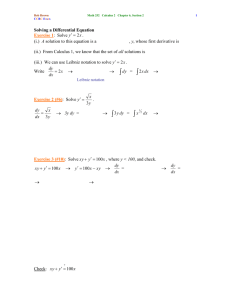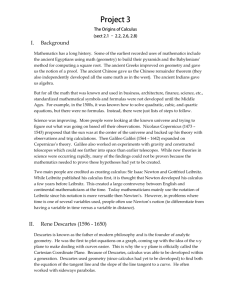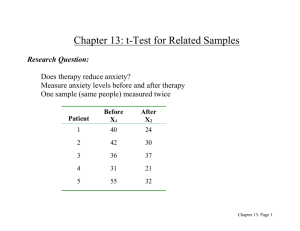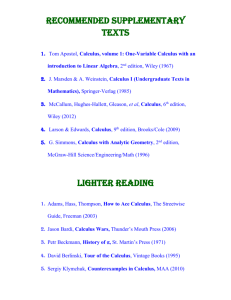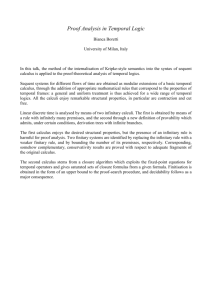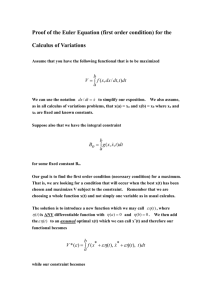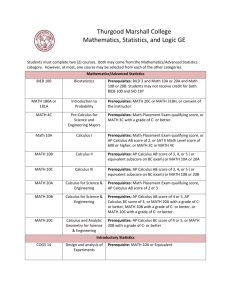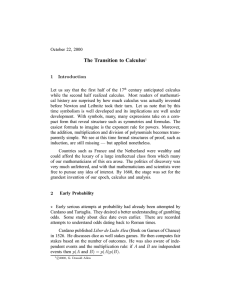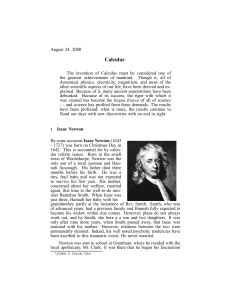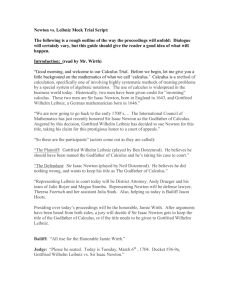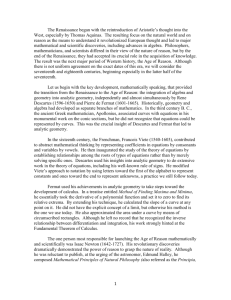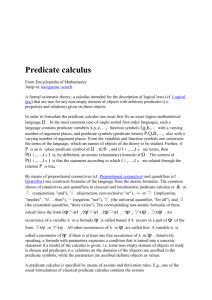A Little History of Real Numbers and the Calculus
advertisement
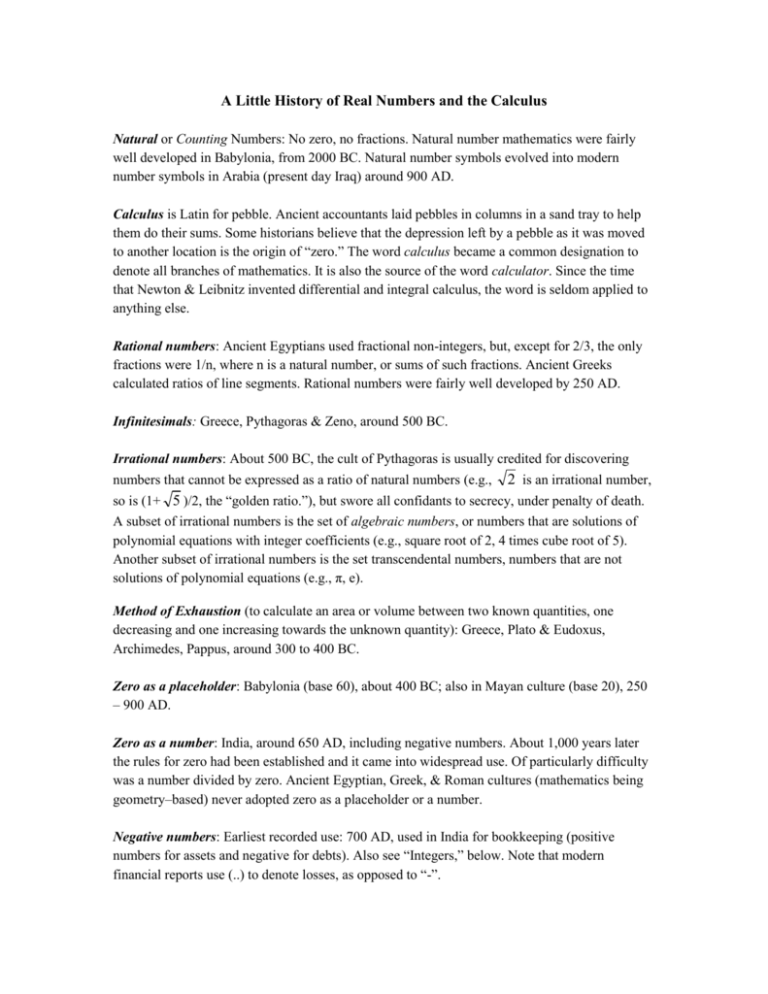
A Little History of Real Numbers and the Calculus Natural or Counting Numbers: No zero, no fractions. Natural number mathematics were fairly well developed in Babylonia, from 2000 BC. Natural number symbols evolved into modern number symbols in Arabia (present day Iraq) around 900 AD. Calculus is Latin for pebble. Ancient accountants laid pebbles in columns in a sand tray to help them do their sums. Some historians believe that the depression left by a pebble as it was moved to another location is the origin of “zero.” The word calculus became a common designation to denote all branches of mathematics. It is also the source of the word calculator. Since the time that Newton & Leibnitz invented differential and integral calculus, the word is seldom applied to anything else. Rational numbers: Ancient Egyptians used fractional non-integers, but, except for 2/3, the only fractions were 1/n, where n is a natural number, or sums of such fractions. Ancient Greeks calculated ratios of line segments. Rational numbers were fairly well developed by 250 AD. Infinitesimals: Greece, Pythagoras & Zeno, around 500 BC. Irrational numbers: About 500 BC, the cult of Pythagoras is usually credited for discovering numbers that cannot be expressed as a ratio of natural numbers (e.g., 2 is an irrational number, so is (1+ 5 )/2, the “golden ratio.”), but swore all confidants to secrecy, under penalty of death. A subset of irrational numbers is the set of algebraic numbers, or numbers that are solutions of polynomial equations with integer coefficients (e.g., square root of 2, 4 times cube root of 5). Another subset of irrational numbers is the set transcendental numbers, numbers that are not solutions of polynomial equations (e.g., π, e). Method of Exhaustion (to calculate an area or volume between two known quantities, one decreasing and one increasing towards the unknown quantity): Greece, Plato & Eudoxus, Archimedes, Pappus, around 300 to 400 BC. Zero as a placeholder: Babylonia (base 60), about 400 BC; also in Mayan culture (base 20), 250 – 900 AD. Zero as a number: India, around 650 AD, including negative numbers. About 1,000 years later the rules for zero had been established and it came into widespread use. Of particularly difficulty was a number divided by zero. Ancient Egyptian, Greek, & Roman cultures (mathematics being geometry–based) never adopted zero as a placeholder or a number. Negative numbers: Earliest recorded use: 700 AD, used in India for bookkeeping (positive numbers for assets and negative for debts). Also see “Integers,” below. Note that modern financial reports use (..) to denote losses, as opposed to “-”. Calculations of maxima & minima for Application to Astronomy & Physics: Kepler, Galileo, Fermat, Descartes, Wallis, Pascal, & others (primarily England and France), 1500 to 1600 AD. Invention of the theory of differential and integral calculus: Newton (England) & Leibnitz (Germany), 1600 to 1700 AD. The integers (positive numbers, zero and negative numbers): In the early 17th century, mathematicians began to use negative numbers, but met with heavy opposition. Descartes called negative roots “false roots,” and Pascal was convinced that numbers “less than zero” could not exist. Newton and Leibnitz accepted negative numbers as useful tools. Most of the theory of the calculus as we know it today was completed by Cauchy (France), Weierstrauss (Germany), & others by 1850 AD.


